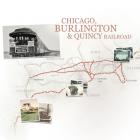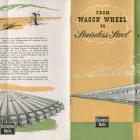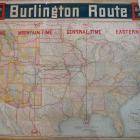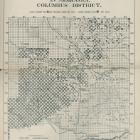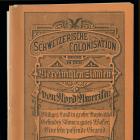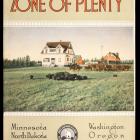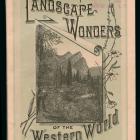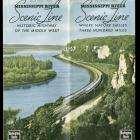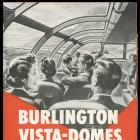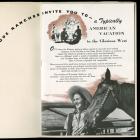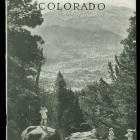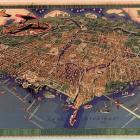Further Reading
A very selective bibliography
Environmental history is a relatively new and dynamic field. For a useful overview of the discipline by some of its key founders, see William Cronon, Alfred Crosby, Carolyn Merchant, Stephen Pyne, Richard White, and Donald Worster, “A Roundtable: Environmental History,” Journal of American History, 76 (1990): 1087–147. From an important collection of essays by New Western historians, William Cronon’s “Kennecott Journey: The Paths out of Town,” in Under an Open Sky: Rethinking America’s Western Past (New York: W. W. Norton & Company, 1992), 28–51 is a thoughtful essay on practicing history. It is relevant to thinking about places anywhere along paths, including railroads.
A good introduction to the history of railroads in the United States is John F. Stover’s American Railroads, 2nd edition (Chicago: University of Chicago Press, 1997). James E. Vance, Jr., sets railroads in a larger spatial and temporal context in Capturing the Horizon: The Historical Geography of Transportation since the Transportation Revolution of the Sixteenth Century (New York: Harper & Row, 1986). The third volume, Transcontinental America, 1850–1915, of D. W. Meinig’s ambitious series The Shaping of America: A Geographical Perspective on 500 Years of History (New Haven: Yale University Press, 1998), covers the key period of the development of railroads. Two books by John Stilgoe explore the role of railroads in landscape change: Metropolitan Corridor: Railroads and the American Scene (New Haven: Yale University Press, 1985); and Train Time: Railroads and the Imminent Reshaping of the United States Landscape (Charlottesville: University of Virginia Press, 2007). Although it is about transcontinental railroads rather than the Granger lines, Richard White’s Railroaded: The Transcontinentals and the Making of Modern America (New York: W. W. Norton & Company, 2011) makes an important contribution to railroad literature along with its digital companion.
The Burlington (CB&Q, or simply “the Q”) has many fans, and several of them have published books on various details of the company’s trains and routes. There are far too many to list here, but some of them are meticulously researched and may be worth seeking out. The unrivaled historian of the Burlington was Richard C. Overton. His two ambitious volumes, along with smaller publications, remain the best place to start. His Burlington Route: A History of the Burlington Lines (New York: Knopf, 1965) is the best overview of the company, but his earlier Burlington West: A Colonization History of the Burlington Railroad (Cambridge: Harvard University Press, 1941) should be of most interest to environmental historians. Another essential resource is the Guide to the Burlington Archives in the Newberry Library, 1851–1901, compiled by Elisabeth Coleman Jackson and Carolyn Curtis (Chicago: Newberry Library, 1949).
Geographer and environmental historian William Cronon made good use of the CB&Q records at the Newberry Library for parts of his book, Nature’s Metropolis: Chicago and the Great West (New York: Norton, 1991). Not only does the book suggest what a valuable resource the CB&Q collection can be for environmental historians, but it also documents the key role played by railroads in environmental change. My understanding of Frederick Jackson Turner and the Frontier Thesis has been influenced by Cronon’s essay, “Revisiting the Vanishing Frontier: The Legacy of Frederick Jackson Turner,” Western Historical Quarterly 18 (1987): 157–76, and also by James R. Grossman, ed., The Frontier in American Culture: Essays by Richard White and Patricia Nelson Limerick (Berkeley: University of California Press, 1994). Robert E. Bonner’s William F. Cody’s Wyoming Empire (Norman: University of Oklahoma Press, 2007) contains valuable information about Cody’s relationship with the Burlington and the company’s role in Cody’s development projects in Wyoming. Thornton Waite’s Yellowstone by Train: A History of Rail Travel to America’s First National Park (Missoula: Pictorial Histories, 2006) is a good source on the relationship between the park and railroads, especially the eighth chapter, “The National Park Road, Chicago, Burlington & Quincy Railroad.” Jeff Crump’s essay, “Where Nature Smiles Three Hundred Miles: Rail Travel Along the River,” in Grand Excursions on the Upper Mississippi River: Places, Landscapes, and Regional Identity after 1854, edited by Curtis C. Roseman and Elizabeth M. Roseman (Iowa City: University of Iowa Press, 2004), 102–17, documents the development of the Burlington’s Mississippi River Scenic Route.
Finally, in preparation for its 1955 centennial, the CB&Q financed the production of Granger Country: A Pictorial Social History of the Burlington Railroad (Boston: Little, Brown & Co., 1949). Edited by Stanley Paragellis, then President of the Newberry, together with journalist and historian Lloyd Lewis, the volume is richly illustrated with historic photographs and drawings, and the superb work of photographers Esther Bubley and Russell Lee, who traveled the Burlington route to capture images of railway laborers, researchers, and passengers, and local people and scenes along the railroad during the late 1940s. In addition, several hundred selections from three thousand recently discovered negatives from unpublished photographs taken by Bubley and Lee are now available in an online collection. The book and the online exhibition contain several images that may be of interest to historians of the environment, landscapes, and locales.
Right-click and save to download citations: RIS/Endnote | BibTex | Zotero



